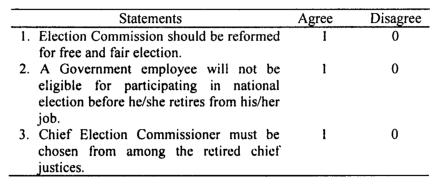Writing for Journal
Progress in research of all disciplines depends on researchers’ efforts to share their works with others. Dissertations and reports are rarely read by more than a handful of individuals.
They are too lengthy, too elaborate, and too inaccessible for widespread use. Publication in a professional journal ensures the broadest possible circulation of scientific findings.
From a personal point of view, having one or more publications in any reefed journals is exciting and professionally advantageous.
A journal article follows the same format as the main body of the thesis, but articles are much shorter.
The purpose of an article is not to demonstrate research competence but to communicate the contribution that the study makes to knowledge.
Because readers of an article are particularly interested in the findings of the study, a relatively large proportion of the journal report is normally devoted to the results and discussion sections.
For the sake of the economy of the journal space, the typical research articles are only about 10 to 20 type-written doublespaced pages, including figures, tables, and references.
Accepted manuscripts almost invariably are revised somewhat, either by the authors at the editor’s request or by the journal’s editorial staff.
Guidelines for writing papers in the standard journal are usually communicated through an editorial policy.
A complete guideline for the authors under the following headings:
- A brief account of the affiliation of the journal
- Review of manuscript
- Submission of the manuscript
- Title and abstract
- Length of manuscript
- Figures and tables
- References
- Affiliation and address of the authors
- Page charges and copyright
- Galley proof
- Subscription rate.
Writing for Conference
Numerous professional organizations sponsor annual meetings at which research activities are presented, either through reading a research report or visual display in a poster session.
The presentation of research results at a conference has at least two advantages over journal publication.
First, there is generally less time elapsed between completing a research project and communicating with others when a presentation is made in a meeting.
Second, there is an opportunity for dialogue between the researcher and the audience at a professional conference. The listeners can request clarification on certain points and suggest interesting modifications to the research paradigm.
In addition, the mechanism for submitting a presentation to a conference is somewhat simpler than in the case of a journal submission.

